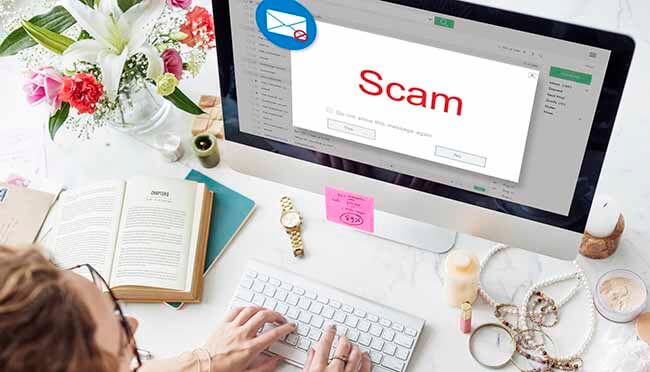What Do Upwork Scams Look Like? Learn to Protect Yourself

As we move closer to a "Gig Economy," more people are choosing to join the freelance workforce or some other outsourcing option. Most newbies go for popular marketplaces like Upwork and Freelancer to get started. But there can be many downsides to doing so, such as the reality of Upwork scams.
Despite efforts to curb fraudulent activities with all sorts of checks and filters, these places are still a far cry from the ideal, leaving freelancers and clients fending for themselves when it comes to dealing with scams.
Upwork complaints
To get a deeper insight into the reality of these scams, we sifted through thousands of reviews from rating sites like Trustpilot and user communities of these platforms to spot some common patterns of these scams. We also read a bunch of different tips articles and freelancing guides to better understand how freelancers can avoid scams. Below are 9 scams in the freelance community, from the client and the freelancer perspectives, and how to protect yourself from them.
(The reviews used here are from sites like Upwork, Freelancer.com, Fiverr, Peopleperhour etc.)
Upwork Scams
Based on real client reviews
Scam #1 - Selling Plagiarized Material
By far the most common scam we found in the reviews was freelancers delivering projects that have been copied plagiarized.
Today, everything can be copied from the web, from logos, articles and branding material to technical code and web designs. When hiring a freelancer online, clients seldom make the effort to cross-check the originality of the content before paying. This turns out to be an expensive mistake.
It doesn’t just mean that the material is non-original; it can get clients involved in copyright infringement and other legal issues they never planned to face.
How to protect yourself:
Always check for originality
- Use Copyscape for written material.
- For designs, use Google reverse image search or other online tools.
- Ask for designs in editable formats and multiple resolutions.
- Ask for the source, usage rights and make sure it is royalty-free.
Scam #2 - Hijacking/Hacking Your Systems
This is one of the most dangerous scams that we came across during our research. When you hire someone to work on your website or any other material, you are giving them access to log into your systems and access your proprietary stuff.
Since scammers are at work day in and day out, they are more than capable of manipulating your systems. Often, clients forget to revoke the access and protect their passwords once a project has been completed, giving scammers the perfect opportunity to hack the programs.
How to protect yourself:
- Always use tools like LastPass to share access to your systems. Never share the actual password.
- Make sure you are giving the right level of access that is required to accomplish the task. Do not give the highest level access by default.
- Once the project is completed, make sure to revoke the access immediately.
- Keep checking system activities and logs while any outsider has access.
Scam #3 - Creating Profiles with a Fake Identity / Fake Location
Another really scary scam that is not as common, but is still prevalent is freelancers creating fake profiles, stealing the identity of someone else trying to leverage their online reputation to win projects.
This is a serious offense qualifying as identity theft, and it can lead clients to major disappointments.
The flip side of lying about identity, is freelancers who lie about their location. Many clients prefer hiring native English speakers, which leaves out the majority of freelancers on these platforms.
To qualify for these projects, the freelancer may muddy the truth or his or her location which can lead to issues down the line.
How to protect yourself:
- Go through the reviews.
- Do a quick online check for the person’s name, search the person's LinkedIn profile or other online personality to see if it sounds believable.
- If hiring for a bigger project, consider asking for referrals.
- When looking for a native speaker, pay special attention to the freelancer's language and grammar.
Scam #4 - Hiring a ‘Reseller’
This one is actually pretty common and has become a thriving business for many scammers. They get hired to do a task for $50 and then outsource it to a shady operation for $5, banking the rest of the money.
Although seemingly harmless, it almost always leads to below-expectation results for the clients. In our opinion, anyone who paid 10 times the worth of something will definitely end up feeling scammed.
How to protect yourself:
- Look out for freelancers promising to deliver in really short timelines.
- Pay special attention to freelancers who finish far too many projects too soon to sound believable, and don't hire them.
- Gauge the knowledge of the freelancer and avoid those who don’t seem to understand the scope of the task completely.
Scam #5 - Fake Positive Reviews
Usually, reviews are considered a protection mechanism that can help you identify the legit freelancers from the fake ones, and it is true to a certain extent.
However, we noticed a lot of these freelance scammers have figured out loopholes in the systems and are somehow managing to maintain their ratings while delivering subpar results.
Thousands of reviews, all with five stars, sound too good to be true.
How to protect yourself:
- Carefully go through multiple reviews to see if they look legit.
- Check if real people are writing those or they are coming from dummy profiles.
- Make sure they aren’t all just ratings and there are detailed reviews along with them.
Scam #6 - Not Showing Up After Getting Hired
Many clients are complaining about losing time because they hired someone to finish a project, but the freelancer never showed up after accepting the project. This causes unnecessary delays.
How to protect yourself:
- Check the freelancer’s past projects and reviews.
- Make sure to clearly communicate a deadline.
- Have a backup plan in case of a no-show.
Pro Tip - When working with such platforms first check out reviews and conversations on their website community or go straight to a reputable freelance agency.
Client Scammers
Based on real client reviews
Scam #1 - Getting Work Done for Free
Freelancers have enough to deal with already with the lack of benefits and unstable income. The last thing they need is not getting paid for their creativity and hard work.
Unfortunately, this is one of the most common scams they face on Upwork and similar sites.
This video explains how scammers are getting freelancers to basically work for free. Also, it includes some good tips on preventing this.
Scam #2 - Dealing Outside the Platform
This is one of the most talked-about red flags that indicate an Upwork scam. A lot of clients who may or may not be legit, ask freelancers to take their conversation outside of the platform to save the “platform fee.”
Freelancers can get lured into the idea of making slightly more money, but they forget the fact that the platforms have a number of mechanisms in place to protect them. On their own, they often end up working for free or not getting paid in a timely manner.
How to protect yourself:
- Don’t share contact details for communication outside the platform.
- Don’t share bank details for getting paid outside the platform.
Scam #3 - Job Postings that Sounds Illegal
Job postings listed as “Business Opportunities,” or involving things like doing bot work, filling in captchas, scraping sensitive information or anything else that sounds illegal or prohibited, are definite red flags for a scam.
How to protect yourself:
- Use your judgment to draw a line.
- If something sounds too good to be true, it probably is.
Pro Tip - If you're tired of one platform check out this list by Forbes on 79 Websites To Get Freelance Jobs Fast

Scam #4 - Making Freelancers Pay to Work
When we first came across this one Upwork scam, it was hard to believe someone would fall for it, but after looking at multiple reviews of victims, it seemed like the perfect bait for freelancers desperate for work.
It involves making the freelancer pay a fee upfront which is supposed to buy tools or programs that will aid them in finishing the project.
How to protect yourself:
- Such jobs generally have a very "clickbaity"(ad-like) job description.
- You are supposed to be getting paid for work. Any job where you have to pay in any way is probably a SCAM.
Is Upwork Safe?
Based on the thorough analysis we carried out, one thing we noticed was that even though there are quite a few real scammers out there, a lot of clients and freelancers are feeling cheated because of simple miscommunication:
- Mismanaged expectations
- Failing to give clear instructions
- Not communicating during the project to get constant feedback
These small issues are behind more failed projects than any Upwork scam, and they exist across all platforms, big or small. So, as a freelancer or a client, you must deal with caution and learn to protect yourselves.
Check out this video on How To Avoid Upwork Scams?
At Superside, we combat these issues with our extensive vetting process, dedicated project managers, and feedback system. Details here.
Check out some of our other freelance-related articles, you might be interested in:
Built to be an extension of in-house teams, we deliver fast, scalable, world-class design and creative solutions to over 450 globally renowned companies such as Amazon, Meta, Salesforce and Google. Connect with us on LinkedIn.











